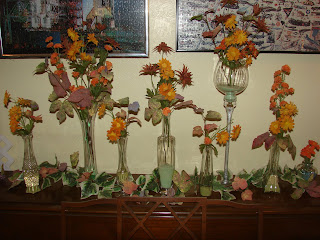
At left is an old gift bag re-covered with new wrapping paper. A covered cereal box with lace trim is on the right.
Christmas has come and gone. Now it is time to clean up the wrapping paper and gift bags. Gift bags can usually be reused but some may look a little worn. But before throwing them out consider re-covering them to give them a second life.
Bags that are torn, wrinkled or just plain look worn out can be covered with a new piece of wrapping paper. This makes the bag ready for the next gift that you give.
We have three birthdays in our family that come within a month of Christmas. So we used birthday paper to re-cover worn out Christmas bags.
For us craft glue worked best to attach the new paper to the old bag. To determine the amount of paper needed we laid the bag on the paper to measure the height of the bag then added about four inches. We folded about two inches to the bottom of the bag and two inches to the inside top of the bag. This gave it a nice finished look.
Also if you run short of gift bags just cover cereal boxes or other boxes with wrapping paper. We first cut the flaps off the top of the cereal box. After covering the box using the same method as with the bag, we used a paper hole punch to make two holes on each side, then threaded a cord or ribbon through for the handles. We used scrap macramé cord for the one pictured with this article.
If no wrapping paper is on hand consider spray painting the box. Then glue the front of an old greeting card in the center for decoration. Rubber stamps could also be used to decorate a painted box.
Fabric is another material that can be used to cover a bag or box. To dress up a plain gift bag glue lace or other fun craft trim to the top edge. Look for ways to personalize each bag.
Always look through what you might have on hand before going out to purchase new supplies. If you do not have exactly what you want, think of alternative items that can be used instead. Be creative and come up with ways to recycle used materials and scraps leftover from past projects.
Other gift wrapping ideas we have written about in the past include: making gift boxes from facial tissue boxes, Sept. 26; sewing gift bags from the legs of used denim jeans, June 20 and a fabric drawstring bag, June 15, 2007.
Don’t forget to give a personalized card with your gift also. We wrote on homemade card ideas June 22, 2007.
 Column to share recipes, gardening projects, crafts, home decorating ideas, activities for families to do and more.
Column to share recipes, gardening projects, crafts, home decorating ideas, activities for families to do and more.



















